Mary and John
by B. van Cleve
The ‘Mary and John’ window is situated on the east side of the church. The first two lights were designed by C E Kempe & Co Ltd. in 1925 and 1933, the third light by an unknown artist. All three lights are dedicated to different persons.
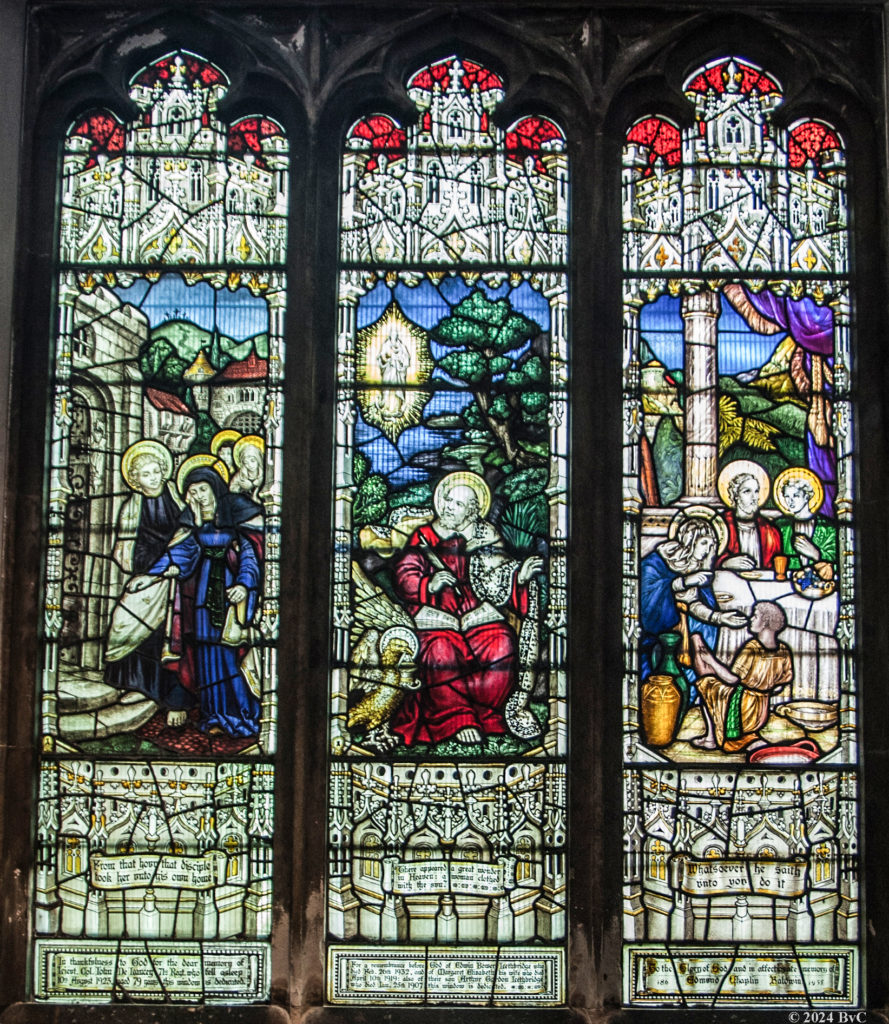
The first two lights of this window were manufactured by C E Kempe & Co Ltd. They show John as young disciple, taking Mary home after the crucifixion, and the same John as a bearded old man on Patmos, writing the book of Revelation. Both lights have the wheat sheaf with superimposed black tower as their logo.
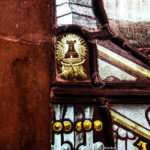
It can be found on the left side of the lights, at the same level as the feet of the Apostle. The left light was manufactured 1925, the middle one 1933. In 1934 C R Kempe & Co Ltd closed down. The right light was not yet commissioned by then.
This third light shows a scene from the wedding in Kana. It was designed by an unknown artist, who emulated the typical style of Kempe windows convincingly, causing the three lights to look like they belong together. One of the few distinguishing features is that, instead of the wheat sheaf with black tower, a fish logo was used.
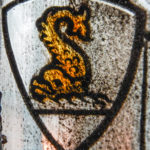
Mary and John

The left light shows Mary in the foreground with halo, supported by John, also with halo. Two other women with halo are following. They are all in an urban environment, which looks very medieval. In the background the three crosses of Calvary are visible on a hill. Underneath this scene a banner is visible with the words:
From that hour that disciple took her unto his own home

The dedicational text reads:
In thankfulness to God for the dear memory of
Lieut. Col. John De Lancey 71st Regt. who fell asleep
10th August 1923 aged 79 years this window is dedicated.
John on Patmos

The light in the middle depicts the apostle and evangelist John as a bearded old man with halo, an open book on his knees and a quill in his hand as if ready to write. Next to him, an eagle with halo is holding a vessel in its beak, which looks like a container for a liquid substance, maybe ink. All is set in an outdoor environment, maybe an island, surrounded by the sea. In the left upper corner, the image of a woman, holding a small child, is visible. Below this scene a floating banner can be seen which reads:
There appeared a great wonder
in Heaven: a woman clothed
with the sun.

The dedicational text reads:
For a remembrance before God of Edwin Bower Lethbridge who
died Feb 26th 1932, and of Margaret Elizabeth his wife who died
April 10th 1919: also of their son Arthur Gordon Lethbridge
who died Jan. 25th 1907 this window is dedicated.
The Wedding to Cana

The right light shows Mary with halo, as she gives instructions to a slave. In the background two disciples with halo are sitting at a well-laid table. Some jars are featuring in the foreground. The banner underneath the scene reads:
Whatsoever he saith
unto you do it.

The dedicational text reads:
To the Glory of God and in affectionate memory of
1860 Edmund Chaplin Baldwin 1935
The last digit of the year of birth is no longer visible, but historic records confirm that Edmund Chaplin Baldwin was born in 1860.
All images © B. van Cleve
← previous window – next window →
Floor plan of stained glass windows in St. Peter’s church Brighton
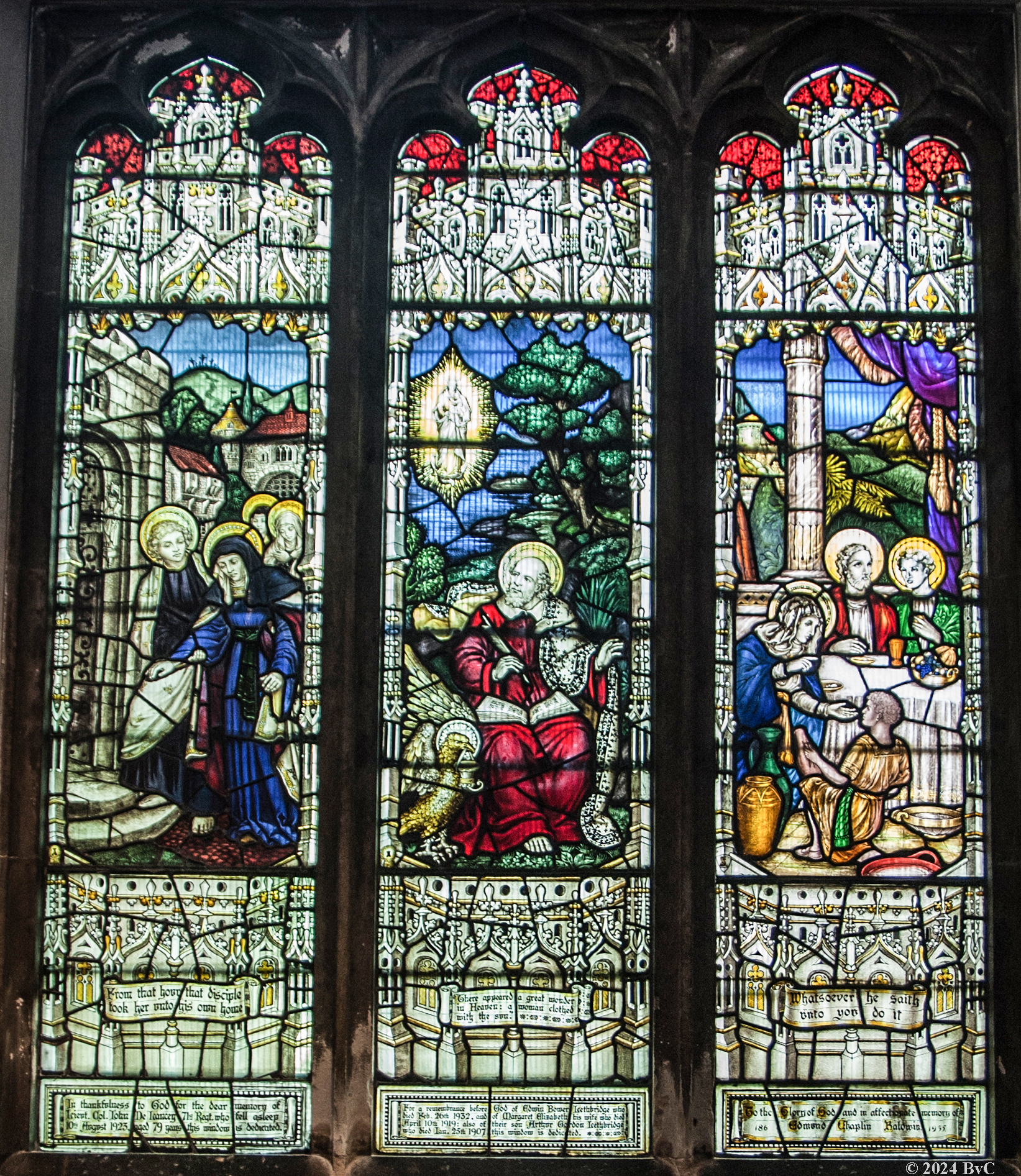
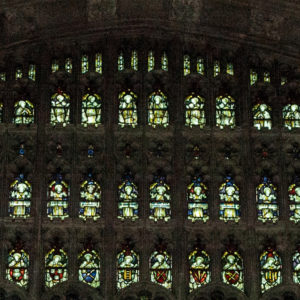
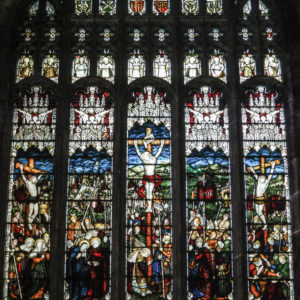
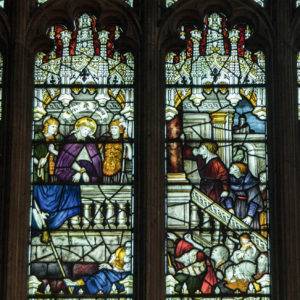
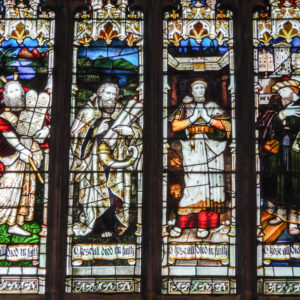
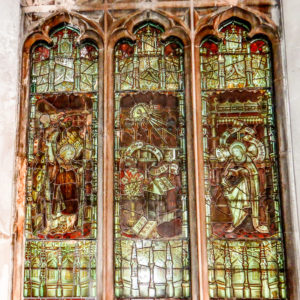
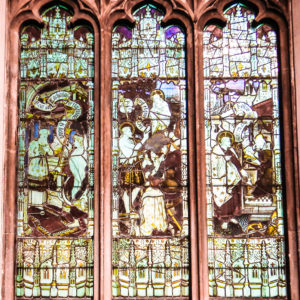
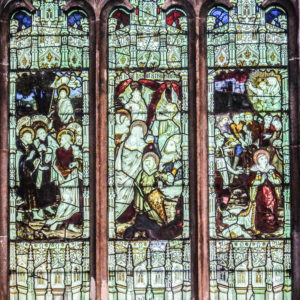
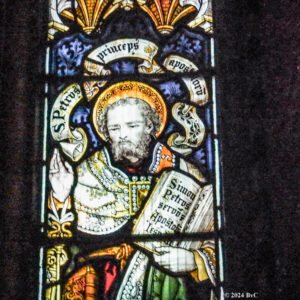
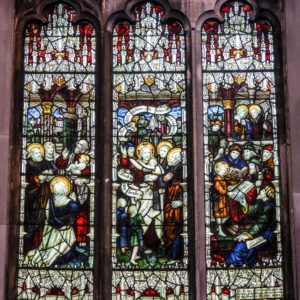
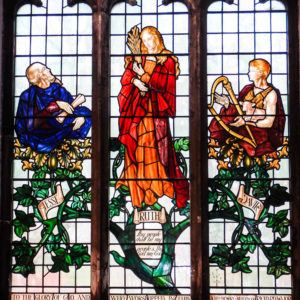
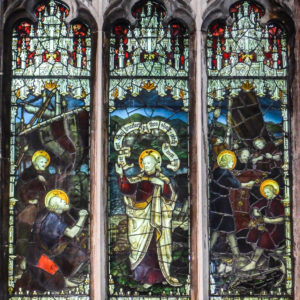
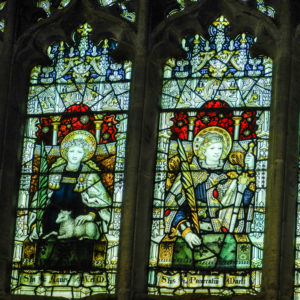
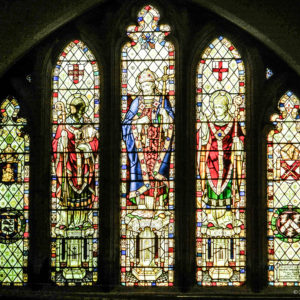
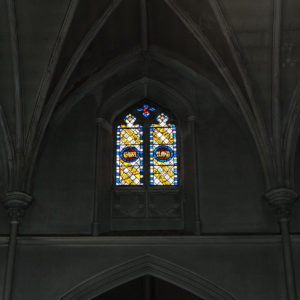
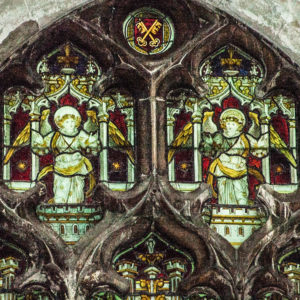
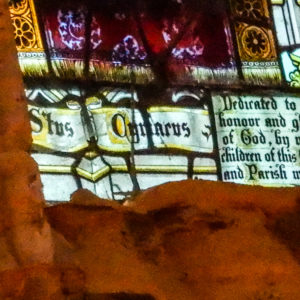
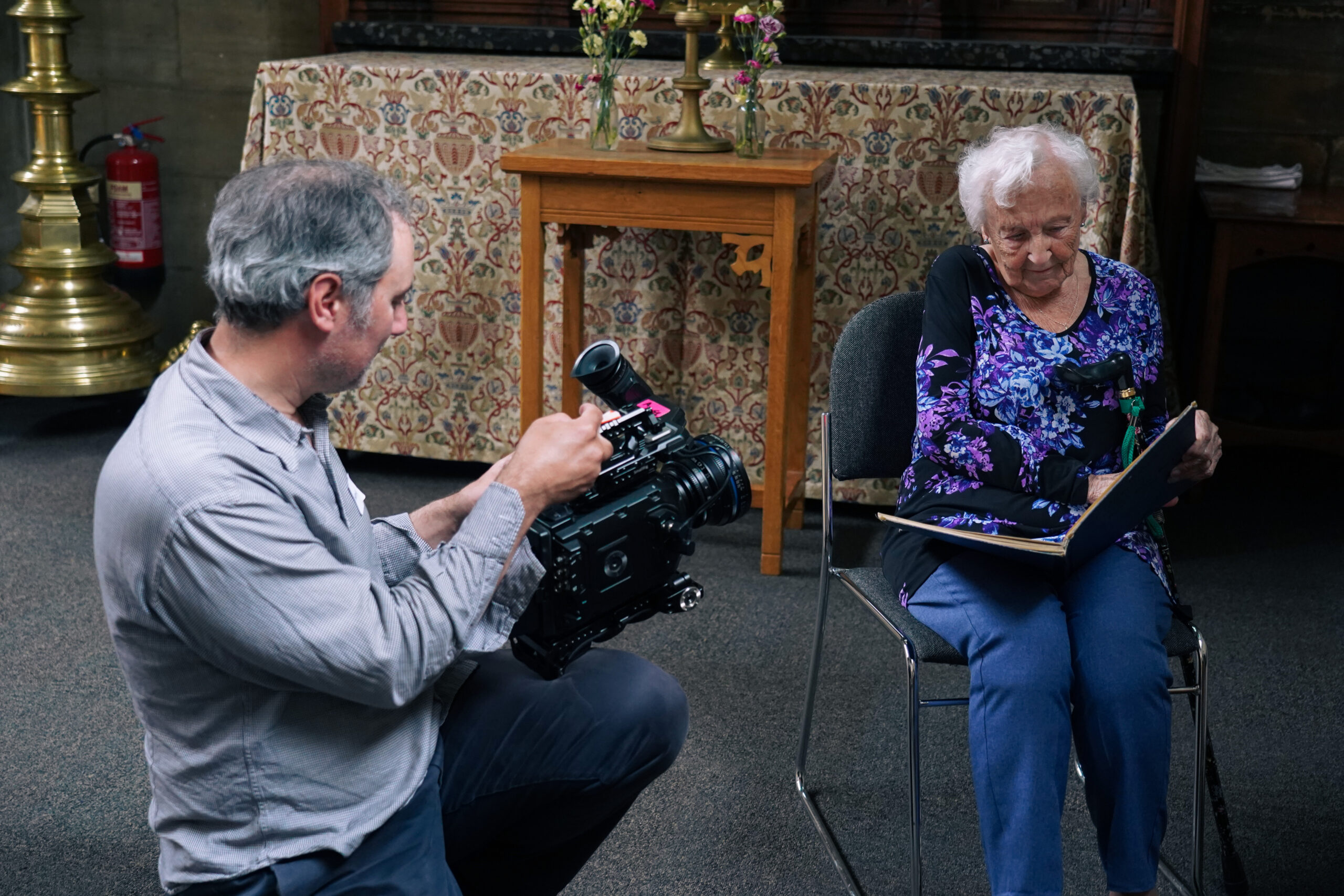



‘This project is kindly funded by Historic England as part of the Everyday Heritage - Working Class Histories. We are grateful to them for this funding.’